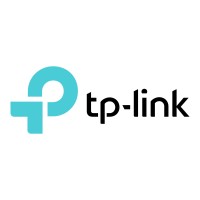Company Details
tp-link-corporation
8,371
59,469
334
tp-link.com
0
TP-_6349132
In-progress

TP-Link Company CyberSecurity Posture
tp-link.comHeadquartered in the United States, TP-Link is a global provider of reliable networking devices and smart home products, consistently ranked as the world’s top provider of Wi-Fi devices. The company is committed to delivering innovative products that enhance people’s lives through faster, more reliable connectivity. With a commitment to excellence, TP-Link serves customers in over 170 countries and continues to grow its global footprint.
Company Details
tp-link-corporation
8,371
59,469
334
tp-link.com
0
TP-_6349132
In-progress
Between 700 and 749

 TP-Link Global Score (TPRM)
TP-Link Global Score (TPRM)XXXX

Description: TP-Link, a major router manufacturer in the US, is facing a potential ban due to security concerns tied to its Chinese origins. A government investigation underscores fears that TP-Link routers could be compromised by state-sponsored Chinese hackers to infiltrate US systems or be coerced into sharing sensitive information with Chinese intelligence. Despite efforts to demonstrate autonomy from its Chinese counterpart and emphasis on internal security measures, the situation raises questions about national cybersecurity and the potential for economic loss or erosion of consumer trust in the brand.
Description: Two high-severity vulnerabilities in TP-Link VIGI network video recorder (NVR) systems could allow attackers to execute arbitrary commands on affected devices. The security flaws, identified as CVE-2025-7723 and CVE-2025-7724, impact the VIGI NVR1104H-4P V1 and VIGI NVR2016H-16MP V2 models, posing significant risks to surveillance infrastructure security. Exploiting these vulnerabilities could enable malicious actors to compromise surveillance footage, alter device settings, or use the network video recorders (NVRs) as footholds for further attacks within an organization’s network. One flaw needs login; the other works without credentials, posing a high risk.
Description: The Ballista botnet, taking advantage of an unpatched vulnerability in TP-Link Archer routers, has significantly impacted multiple sectors including manufacturing, healthcare, services, and technology across the U.S., Australia, China, and Mexico. Beyond its widespread presence in various critical industries, this botnet exploits the routers for command and control (C2) channels, enabling DoS/DDoS attacks, data exfiltration, and persistent unauthorized access. With over 6,500 identified vulnerable devices, the threat actors behind Ballista have exhibited sophisticated capabilities that threaten not only individual organizations but also the integrity of IoT devices within critical infrastructure.
Description: TP-Link, a leading router manufacturer in the US with historic ties to China, is under investigation following security concerns. Despite no evidence of deliberate wrongdoing, the company's eligibility to operate in the US market is threatened due to potential vulnerabilities that could be exploited by Chinese state-sponsored hackers, potentially compromising sensitive US information.


TP-Link has 1328.57% more incidents than the average of same-industry companies with at least one recorded incident.
TP-Link has 525.0% more incidents than the average of all companies with at least one recorded incident.
TP-Link reported 4 incidents this year: 0 cyber attacks, 0 ransomware, 3 vulnerabilities, 1 data breaches, compared to industry peers with at least 1 incident.
TP-Link cyber incidents detection timeline including parent company and subsidiaries

Headquartered in the United States, TP-Link is a global provider of reliable networking devices and smart home products, consistently ranked as the world’s top provider of Wi-Fi devices. The company is committed to delivering innovative products that enhance people’s lives through faster, more reliable connectivity. With a commitment to excellence, TP-Link serves customers in over 170 countries and continues to grow its global footprint.

Step into the innovative world of LG Electronics. As a global leader in technology, LG Electronics is dedicated to creating innovative solutions for a better life. Our brand promise, 'Life's Good', embodies our commitment to ensuring a happier, better life for all. With a rich history spanning ov

Samsung Electronics is a global leader in technology, opening new possibilities for people everywhere. Through relentless innovation and discovery, we are transforming the worlds of TVs, smartphones, wearable devices, tablets, digital appliances, network systems, medical devices, semiconductors and
Voltas is the No. 1* Room Air Conditioner Brand in India. Apart from ACs, Voltas offers a wide range of cooling products including Air Coolers, Commercial Refrigeration, Water Coolers and Water Dispensers. Apart from being the leaders in consumer products, Voltas is also one of the world's premier e

Headquartered in Stamford, Connecticut, HARMAN (harman.com) designs and engineers connected products and solutions for automakers, consumers, and enterprises worldwide, including connected car systems, audio and visual products, enterprise automation solutions; and services supporting the Internet o

We’re a diverse collective of thinkers and doers, continually reimagining what’s possible to help us all do what we love in new ways. And the same innovation that goes into our products also applies to our practices — strengthening our commitment to leave the world better than we found it. This is w

As part of the Lenovo family, Motorola Mobility is creating innovative smartphones and accessories designed with the consumer in mind. That’s why we’re looking for the thinkers, innovators and problem solvers who believe in working together to challenge the status quo. If you share our commitment to
.png)
TP-Link claims Netgear misrepresented a Microsoft report, harming its public reputation significantly; Netgear CEO remarks allegedly linked...
Network gear vendors TP-Link Systems and Netgear have become embroiled in a legal spat over claims of Chinese espionage.
TP-Link Routers Could Soon Be Banned. Here's What Cybersecurity Experts Say About the Risk. The company has been under investigation by the US...
The US government is considering a complete ban on TP-Link routers after multiple agencies raised national security concerns about the...
Tech News News: US federal agencies, including Commerce, Defense, and Homeland Security, are considering a complete ban on future TP-Link...
TP-Link routers, mesh systems, and range extenders frequently top our recommendation lists as some of the best-value networking products you...
U.S. federal agencies are reportedly considering a significant restriction on TP-Link, a company that produces widely used home internet...
One of the most popular Wi-Fi router brands in the US faces a potential ban over national security concerns.
Rising Concerns Over TP-Link Routers. The U.S. government is intensifying scrutiny on TP-Link, one of the nation's most popular Wi-Fi router...

Explore insights on cybersecurity incidents, risk posture, and Rankiteo's assessments.
The official website of TP-Link is http://www.tp-link.com.
According to Rankiteo, TP-Link’s AI-generated cybersecurity score is 713, reflecting their Moderate security posture.
According to Rankiteo, TP-Link currently holds 0 security badges, indicating that no recognized compliance certifications are currently verified for the organization.
According to Rankiteo, TP-Link is not certified under SOC 2 Type 1.
According to Rankiteo, TP-Link does not hold a SOC 2 Type 2 certification.
According to Rankiteo, TP-Link is not listed as GDPR compliant.
According to Rankiteo, TP-Link does not currently maintain PCI DSS compliance.
According to Rankiteo, TP-Link is not compliant with HIPAA regulations.
According to Rankiteo,TP-Link is not certified under ISO 27001, indicating the absence of a formally recognized information security management framework.
TP-Link operates primarily in the Computers and Electronics Manufacturing industry.
TP-Link employs approximately 8,371 people worldwide.
TP-Link presently has no subsidiaries across any sectors.
TP-Link’s official LinkedIn profile has approximately 59,469 followers.
TP-Link is classified under the NAICS code 334, which corresponds to Computer and Electronic Product Manufacturing.
No, TP-Link does not have a profile on Crunchbase.
Yes, TP-Link maintains an official LinkedIn profile, which is actively utilized for branding and talent engagement, which can be accessed here: https://www.linkedin.com/company/tp-link-corporation.
As of November 27, 2025, Rankiteo reports that TP-Link has experienced 4 cybersecurity incidents.
TP-Link has an estimated 1,887 peer or competitor companies worldwide.
Incident Types: The types of cybersecurity incidents that have occurred include Breach and Vulnerability.
Detection and Response: The company detects and responds to cybersecurity incidents through an remediation measures with internal security measures, and containment measures with firmware updates, containment measures with network segmentation, and remediation measures with firmware updates, and network segmentation with implement additional network segmentation measures..
Title: TP-Link Under Investigation for Security Concerns
Description: TP-Link, a leading router manufacturer in the US with historic ties to China, is under investigation following security concerns. Despite no evidence of deliberate wrongdoing, the company's eligibility to operate in the US market is threatened due to potential vulnerabilities that could be exploited by Chinese state-sponsored hackers, potentially compromising sensitive US information.
Type: Security Investigation
Vulnerability Exploited: Potential vulnerabilities in router hardware
Threat Actor: Chinese state-sponsored hackers
Motivation: Potential compromise of sensitive US information
Title: Potential Ban of TP-Link Routers Due to Security Concerns
Description: TP-Link, a major router manufacturer in the US, is facing a potential ban due to security concerns tied to its Chinese origins. A government investigation underscores fears that TP-Link routers could be compromised by state-sponsored Chinese hackers to infiltrate US systems or be coerced into sharing sensitive information with Chinese intelligence. Despite efforts to demonstrate autonomy from its Chinese counterpart and emphasis on internal security measures, the situation raises questions about national cybersecurity and the potential for economic loss or erosion of consumer trust in the brand.
Type: National Security Concern
Attack Vector: State-Sponsored HackingCompromised Hardware
Threat Actor: State-Sponsored Chinese Hackers
Motivation: EspionageInfiltration of US Systems
Title: Ballista Botnet Exploiting TP-Link Archer Routers
Description: The Ballista botnet, taking advantage of an unpatched vulnerability in TP-Link Archer routers, has significantly impacted multiple sectors including manufacturing, healthcare, services, and technology across the U.S., Australia, China, and Mexico. Beyond its widespread presence in various critical industries, this botnet exploits the routers for command and control (C2) channels, enabling DoS/DDoS attacks, data exfiltration, and persistent unauthorized access. With over 6,500 identified vulnerable devices, the threat actors behind Ballista have exhibited sophisticated capabilities that threaten not only individual organizations but also the integrity of IoT devices within critical infrastructure.
Type: Botnet
Attack Vector: Unpatched vulnerability in TP-Link Archer routers
Vulnerability Exploited: Unpatched vulnerability in TP-Link Archer routers
Motivation: DoS/DDoS attacks, data exfiltration, and persistent unauthorized access
Title: TP-Link VIGI NVR Command Injection Vulnerabilities
Description: Two high-severity vulnerabilities in TP-Link VIGI network video recorder (NVR) systems could allow attackers to execute arbitrary commands on affected devices.
Type: Vulnerability Exploitation
Attack Vector: Authenticated Command InjectionUnauthenticated Command Injection
Vulnerability Exploited: CVE-2025-7723CVE-2025-7724
Common Attack Types: The most common types of attacks the company has faced is Vulnerability.

Systems Affected: Router hardware
Brand Reputation Impact: Threat to eligibility to operate in the US market

Systems Affected: TP-Link Routers
Brand Reputation Impact: Erosion of Consumer Trust

Systems Affected: TP-Link Archer routers

Systems Affected: VIGI NVR1104H-4P V1VIGI NVR2016H-16MP V2

Entity Name: TP-Link
Entity Type: Manufacturer
Industry: Technology
Location: US

Entity Name: TP-Link
Entity Type: Company
Industry: Technology
Location: US

Entity Type: Organization
Industry: Manufacturing, Healthcare, Services, Technology
Location: U.S.AustraliaChinaMexico

Entity Name: TP-Link
Entity Type: Manufacturer
Industry: Technology

Remediation Measures: Internal Security Measures

Containment Measures: Firmware updatesNetwork segmentation
Remediation Measures: Firmware updates
Network Segmentation: Implement additional network segmentation measures
Prevention of Data Exfiltration: The company takes the following measures to prevent data exfiltration: Internal Security Measures, , Firmware updates, .
Handling of PII Incidents: The company handles incidents involving personally identifiable information (PII) through by firmware updates, network segmentation and .

Recommendations: Update device firmware immediately, Post-update configuration verificationUpdate device firmware immediately, Post-update configuration verification

Investigation Status: Ongoing

Investigation Status: ['Government Investigation']

High Value Targets: Sensitive US information
Data Sold on Dark Web: Sensitive US information

Root Causes: Chinese Origins, Potential State-Sponsored Compromise,

Root Causes: Unpatched vulnerability in TP-Link Archer routers
Last Attacking Group: The attacking group in the last incident were an Chinese state-sponsored hackers and State-Sponsored Chinese Hackers.
Most Significant System Affected: The most significant system affected in an incident was TP-Link Routers and and VIGI NVR1104H-4P V1VIGI NVR2016H-16MP V2.
Containment Measures in Most Recent Incident: The containment measures taken in the most recent incident was Firmware updatesNetwork segmentation.
Most Significant Recommendation Implemented: The most significant recommendation implemented to improve cybersecurity was Post-update configuration verification and Update device firmware immediately.
Current Status of Most Recent Investigation: The current status of the most recent investigation is Ongoing.
Most Significant Root Cause: The most significant root cause identified in post-incident analysis was Chinese OriginsPotential State-Sponsored Compromise, Unpatched vulnerability in TP-Link Archer routers.
.png)
Angular is a development platform for building mobile and desktop web applications using TypeScript/JavaScript and other languages. Prior to versions 19.2.16, 20.3.14, and 21.0.1, there is a XSRF token leakage via protocol-relative URLs in angular HTTP clients. The vulnerability is a Credential Leak by App Logic that leads to the unauthorized disclosure of the Cross-Site Request Forgery (XSRF) token to an attacker-controlled domain. Angular's HttpClient has a built-in XSRF protection mechanism that works by checking if a request URL starts with a protocol (http:// or https://) to determine if it is cross-origin. If the URL starts with protocol-relative URL (//), it is incorrectly treated as a same-origin request, and the XSRF token is automatically added to the X-XSRF-TOKEN header. This issue has been patched in versions 19.2.16, 20.3.14, and 21.0.1. A workaround for this issue involves avoiding using protocol-relative URLs (URLs starting with //) in HttpClient requests. All backend communication URLs should be hardcoded as relative paths (starting with a single /) or fully qualified, trusted absolute URLs.
Forge (also called `node-forge`) is a native implementation of Transport Layer Security in JavaScript. An Uncontrolled Recursion vulnerability in node-forge versions 1.3.1 and below enables remote, unauthenticated attackers to craft deep ASN.1 structures that trigger unbounded recursive parsing. This leads to a Denial-of-Service (DoS) via stack exhaustion when parsing untrusted DER inputs. This issue has been patched in version 1.3.2.
Forge (also called `node-forge`) is a native implementation of Transport Layer Security in JavaScript. An Integer Overflow vulnerability in node-forge versions 1.3.1 and below enables remote, unauthenticated attackers to craft ASN.1 structures containing OIDs with oversized arcs. These arcs may be decoded as smaller, trusted OIDs due to 32-bit bitwise truncation, enabling the bypass of downstream OID-based security decisions. This issue has been patched in version 1.3.2.
Suricata is a network IDS, IPS and NSM engine developed by the OISF (Open Information Security Foundation) and the Suricata community. Prior to versions 7.0.13 and 8.0.2, working with large buffers in Lua scripts can lead to a stack overflow. Users of Lua rules and output scripts may be affected when working with large buffers. This includes a rule passing a large buffer to a Lua script. This issue has been patched in versions 7.0.13 and 8.0.2. A workaround for this issue involves disabling Lua rules and output scripts, or making sure limits, such as stream.depth.reassembly and HTTP response body limits (response-body-limit), are set to less than half the stack size.
Suricata is a network IDS, IPS and NSM engine developed by the OISF (Open Information Security Foundation) and the Suricata community. In versions from 8.0.0 to before 8.0.2, a NULL dereference can occur when the entropy keyword is used in conjunction with base64_data. This issue has been patched in version 8.0.2. A workaround involves disabling rules that use entropy in conjunction with base64_data.

Get company history
















Every week, Rankiteo analyzes billions of signals to give organizations a sharper, faster view of emerging risks. With deeper, more actionable intelligence at their fingertips, security teams can outpace threat actors, respond instantly to Zero-Day attacks, and dramatically shrink their risk exposure window.
Identify exposed access points, detect misconfigured SSL certificates, and uncover vulnerabilities across the network infrastructure.
Gain visibility into the software components used within an organization to detect vulnerabilities, manage risk, and ensure supply chain security.
Monitor and manage all IT assets and their configurations to ensure accurate, real-time visibility across the company's technology environment.
Leverage real-time insights on active threats, malware campaigns, and emerging vulnerabilities to proactively defend against evolving cyberattacks.




